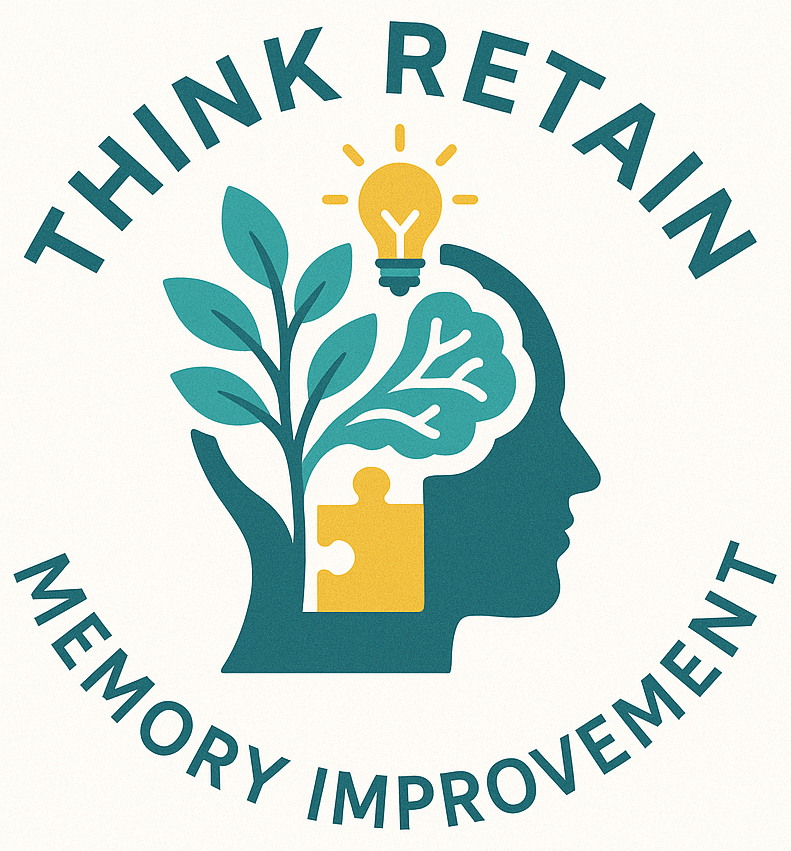Memory techniques help people learn and recall information more effectively. People, from ancient scholars to modern students, have used such strategies for centuries. Today, these techniques are easier to learn than ever and can boost everyday tasks. In this article, I examine memory techniques, explaining what they are, their benefits, and how to start using them in your life.

Understanding Memory Techniques

Memory techniques include strategies that help the brain store, organize, and retrieve information. These methods can support studying, retaining hobbies, and even keeping track of daily activities. Several time-tested methods rely on associations, patterns, and mental imagery. For example, using visual anchors or linking new information to something familiar can make remembering easier.
The purpose of using memory techniques is simple: to make learning efficient and lessen the mental load required. By building a network of associations, refreshing your memory and recalling details becomes less challenging. This skills transfer supports personal growth and academic life, making the adventure less stressful and more enjoyable.
Furthermore, memory techniques benefit academic pursuits and serve as valuable tools in everyday life. Whether you are trying to remember a grocery list or an important appointment, these strategies help you establish a clear mental map. Over time, practicing these methods can improve how you process and retain information, giving your daily routines a next-level cool upgrade.
Key Memory Techniques for Better Recall
There are many practical memory techniques designed to boost recall. The following are some of the easier methods to understand and adopt:
- Method of Loci: Also known as the memory palace, this involves associating items with physical locations in your mind. You imagine a familiar space and place pieces of information there. Each location becomes a marker that guides you when you revisit the memory later.
- Chunking: This technique involves breaking information into smaller, manageable units. Numbers, lists, or words can be grouped so they are easier to remember. For instance, a long string of digits is often recalled better when segmented into groups, making the recall process smoother.
- Mnemonic Devices: Mnemonics are tools that help you remember information through patterns such as rhyme, acronym, or alliteration. They simplify recall by linking complex content to a simple phrase or word, thereby reinforcing your learning process.
- Visualization: When information is converted into vivid images, it becomes easier to retrieve. This method pairs abstract concepts with concrete images, giving a boost to your recall by engaging your visual memory in an eye-catching way.
- Association: This simple method involves linking new data to something you already know well. The more unexpected or unique the connection, the better it works in triggering your memory. This process can turn mundane information into memorable insights.
- Rhymes and Songs: Setting data to music or rhythm is an effective technique. This can be especially helpful with repetitive lists or sequences, as our natural ear for patterns picks up musical cues effortlessly.
Each of these techniques has been used by learners to great effect. With practice, you may find that one method suits your style better than the others. In many cases, mixing two or more methods can provide even better results by creating multiple pathways for recall.
Getting Started With Memory Techniques
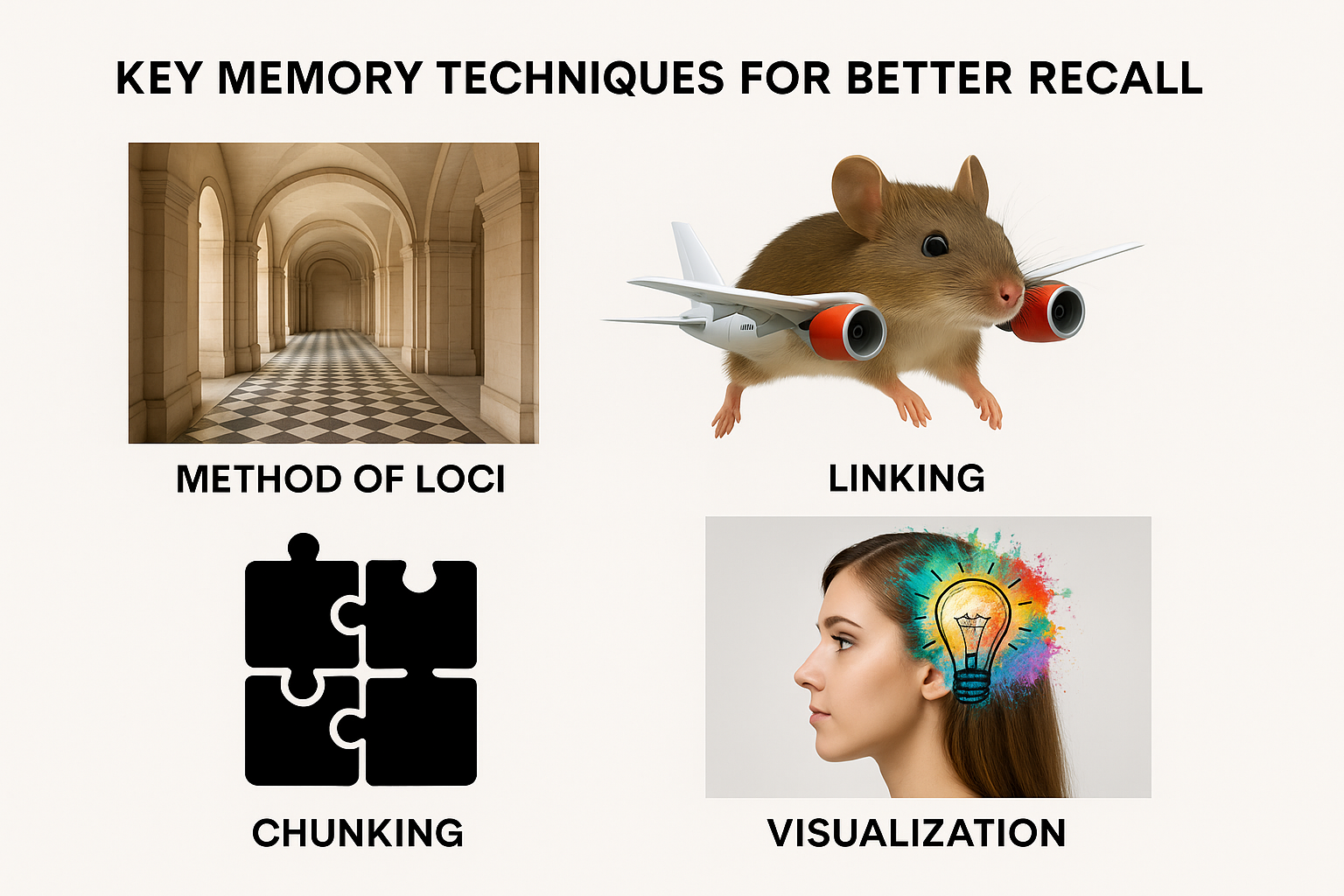
Before jumping into memory techniques, it pays to understand your learning style and needs. For individuals new to these methods, beginning with basic exercises can prove very helpful. The adventure begins by setting manageable goals and gradually challenging your memory with practical tasks.
If you are wondering how to start, consider the following steps as guidelines to build your foundation:
- Identify Your Needs: Think about what you need to remember more clearly. It might be exam material, vocabulary, or everyday lists. This clarity can help determine which technique to try first.
- Learn the Basics: Start with a single method, such as loci or simple mnemonics. Focus on creating a memory palace or crafting a memorable phrase that represents the information you need.
- Practice Regularly: Like any skill, the more you practice, the better you get. Set aside a regular time to exercise your memory; repetition and patience are essential.
- Experiment and Mix Techniques: Don’t be afraid to adjust your strategies. Combining techniques like chunking with visualization often leads to notable improvements. Test different approaches until you find one that perfectly fits your style.
- Review and Adjust: As you use these techniques, note what works and what needs tweaking. Self-reflection in your practice will help build a robust memory system over time.
By following these guidelines, you can build a stronger memory toolkit. Remember that progress may come in small increments, so patience is important as your skills develop. Over multiple practice sessions, you will likely notice subtle shifts in how quickly and accurately you can recall details.
What to Consider When Using Memory Techniques
Memory techniques bring many benefits, but there are also some factors to keep in mind. Understanding potential challenges means you can prepare accordingly and adjust your methods as needed.
- Consistency: Like any skill, improving memory requires regular practice. Sporadic use of these methods may lead to less noticeable gains, so keeping a consistent schedule is important.
- Personalization: Not every technique works the same for everyone. Some people pick up visual methods more easily, while others excel with logical associations. It is essential to tailor your approach to match your own learning style.
- Time Investment: Building new memory habits takes time and persistence. Although these strategies might seem time-consuming in the beginning, they soon become second nature with regular practice.
- Environmental Influences: Distractions can hinder your practice. Finding a quiet, familiar space for your exercises can improve concentration and help your brain absorb new information.

By considering these points, you can spot potential obstacles early. A mindful approach helps you smooth the way to fully benefit from these techniques, turning challenges into opportunities for growth.
Overcoming Common Memory Hurdles
For many people, memory lapses come with daily distractions and busy routines. Common hurdles include difficulty staying focused, stress, and a lack of regular practice. Developing practical strategies to address these issues is key.
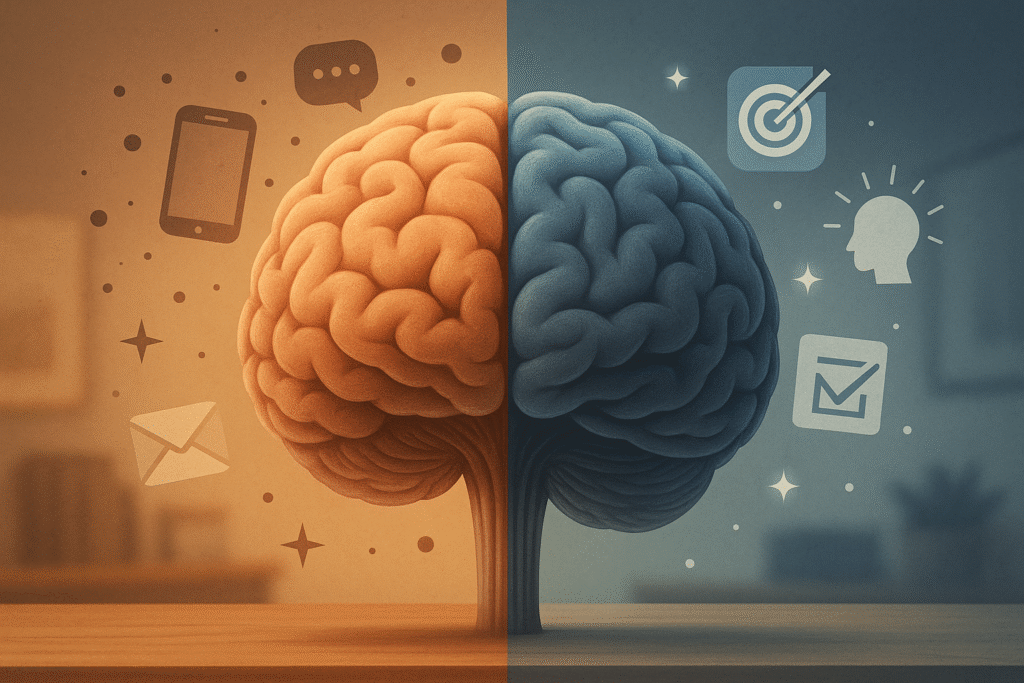
For example, setting aside dedicated study periods or memory sessions can help you build consistent practice habits. This regular schedule reduces the tendency to rely solely on short-term memory. In addition, maintaining a calm state of mind helps you absorb and retain new information more effectively. Simple tools such as quiet spaces, scheduled breaks, and mindful breathing techniques can support your efforts considerably.
Advanced Tips and Tricks
Once you’re comfortable with basic memory techniques, you might want to explore some advanced strategies to give a boost to your recall abilities further. These next-level methods may require extra practice but can yield significant long-term results.
Interlinking Techniques: Combine different methods in creative ways. For instance, use both visualization and association to link ideas together so that retracing your thoughts becomes easier. This blend creates multiple recall routes leading to the same piece of information.
Practice Active Recall: Instead of simply reviewing your notes, challenge yourself to remember details without any prompts. Testing your memory in this way reinforces your mental pathways and results in stronger, more resilient recall.
Spaced Repetition: Rather than trying to memorize everything in one go, space out your review sessions. This technique helps transfer data from short-term memory to long-term storage by refreshing your memory at carefully timed intervals.
Mind Mapping: Create diagrams that visually connect ideas. Mind maps simplify complex subjects by showing associations and hierarchies in one clear visual layout. They are an effective tool for linking diverse concepts.
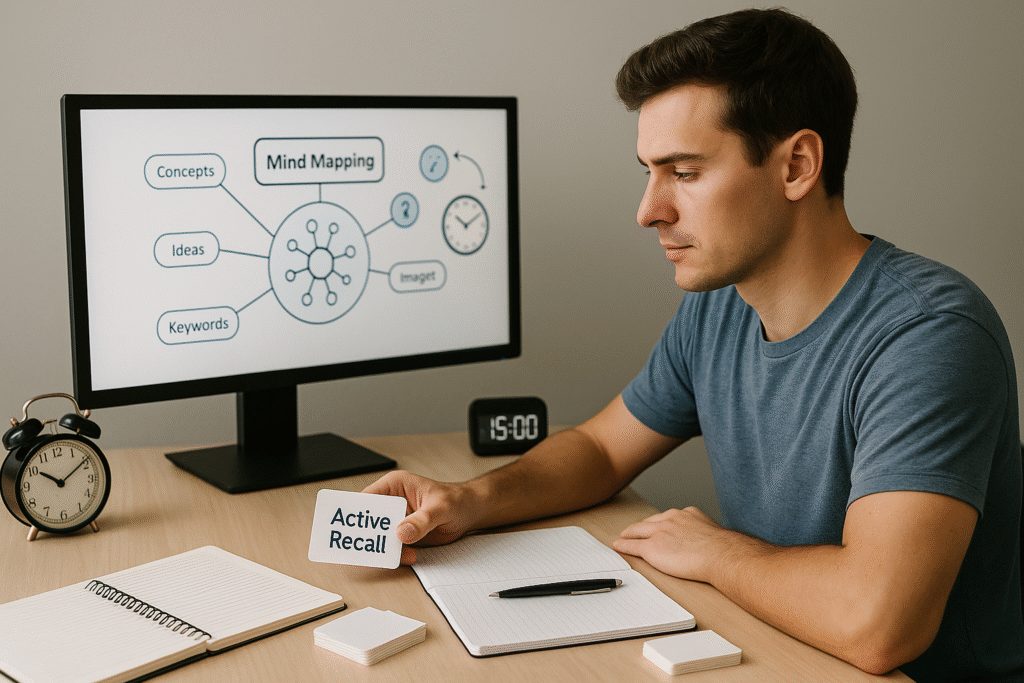
This advanced level of practice can deepen your understanding and solidify the ways in which you store and retrieve information. Experiment with these advanced tips to see which ones work best for you over time.
Additional Insights and Strategies
Beyond the standard memory techniques, there are additional insights that can help you refine your approach further. It can be very important to track your progress over the weeks. Keeping a simple journal where you note which methods have helped you the most might turn out to be a game changer. Over time, this personal record can offer clues about which strategies best suit your learning style.
Another helpful tip is to set small, measurable goals. Instead of overwhelming yourself with too much information at once, work on remembering a few new items each day. As you gradually build your confidence and skill set, you can take on larger challenges. This steady improvement consolidates memory techniques and reinforces your overall learning habits.
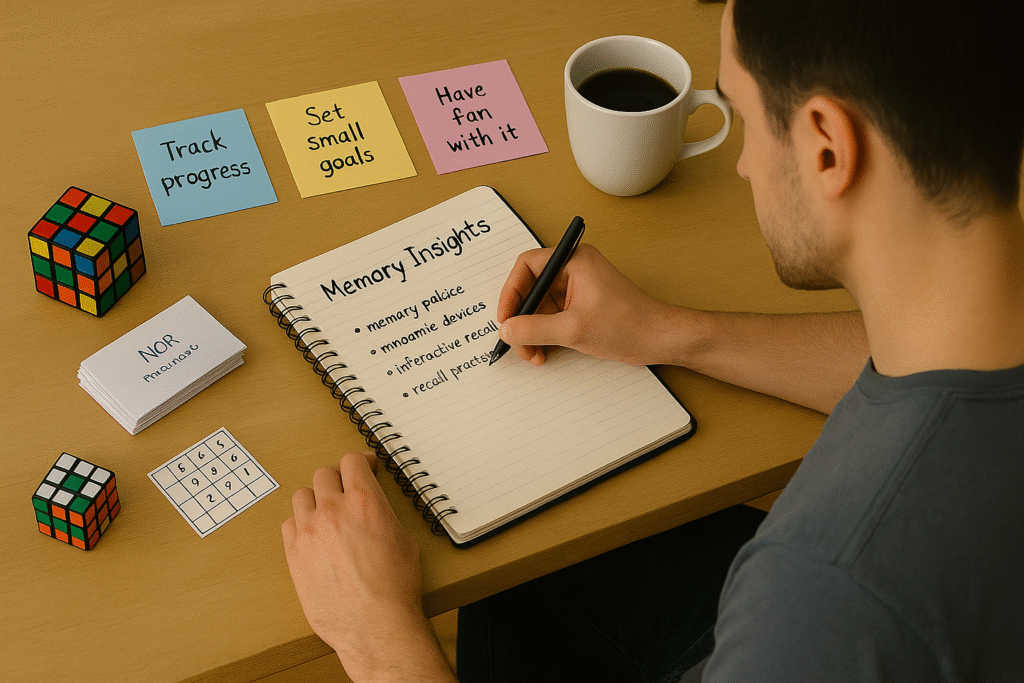
Furthermore, exploring a variety of memory exercises outside of formal study sessions can add fun to the process. Try playing memory games, solving puzzles, or even teaching a friend a new mnemonic trick. These activities make the experience more engaging and help switch up your routine, ensuring your brain is constantly challenged.
The Impact of Memory Techniques in Everyday Life
Memory techniques extend beyond academic or professional settings. They provide practical benefits in daily tasks. When you adopt these methods, memorizing a shopping list or recalling an appointment becomes much easier. Knowing that you can accurately remember details can boost your confidence during conversations or when acquiring new skills.
Students find that using memory techniques makes studying less stressful. Instead of repeatedly rereading textbooks, they employ mnemonics or visualisation methods to capture key details. As a result, studying transforms from a mundane task into an interactive and rewarding exercise.
Professionals also benefit greatly from these techniques. Whether it is recalling client details, meeting dates, or important project milestones, a well-honed memory can improve performance and reduce errors. This reliability often translates into better organizational skills, which is very important in any field of work.

The benefits extend to personal development as well. A well-trained memory supports activities like reading, learning new skills, or even tracking family milestones. Moreover, using memory techniques can become part of a broader effort to nurture mindfulness and mental clarity, paving the way for both academic and personal success.
Frequently Asked Questions
Below are some common questions people often have about memory techniques:

Question: What exactly are memory techniques?
Answer: Memory techniques are strategies designed to improve the brain’s ability to store, organize, and recall information. They often rely on visualization, association, and repetition to make it easier to remember complex data.
Question: Can memory techniques help with studying?
Answer: Yes. Using methods like mnemonics, spaced repetition, and the method of loci can significantly improve study habits and academic performance by making learning more engaging.
Question: How long does it take to see improvements?
Answer: The time to see improvements varies. With regular practice, some individuals notice changes within weeks while others may need a longer period as their brain adapts to these new techniques.
Question: Are there any drawbacks to using memory techniques?
Answer: Although there are few risks, some beginners might find the initial learning curve challenging. With persistence and regular practice, these early difficulties usually fade, allowing the benefits to shine through.
Conclusion
Memory techniques offer practical tools for boosting learning and recall. Whether you are a student, a professional, or someone looking to manage daily tasks more efficiently, these strategies can transform how you process and retain information. They provide alternatives to conventional study methods and can make learning enjoyable and less overwhelming.
The adventure to improve memory starts with understanding your own needs and experimenting with different strategies. With regular practice, methods like loci, chunking, and mnemonic devices become essential parts of your personal learning routine. The benefits appear in academic settings as well as during everyday interactions.
A good memory builds confidence and helps ease the burden of information overload. This improvement can lead to more creative and compelling learning experiences. It isn’t just about remembering facts. It is about building a reliable system that supports your intellectual and personal growth.
Take the first step by exploring one or two methods that catch your interest and commit to regular practice. Over time, you will likely notice significant improvements in your ability to recall details and manage information. The impact of these techniques can ripple into many aspects of your life, from better study habits to more organized work practices.
Explore, practice, and adjust your memory techniques adventure. With dedication and consistent effort, you may find that your mind unlocks its full potential, making everyday learning a more engaging and productive experience.
